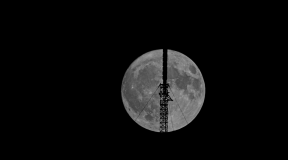The company will leverage a universal production method and AI algorithms in hopes of competing with giants like SpaceX and Blue Origin.
Relativity Space is planning a revolution in rocket science by using metal 3D printing and reducing the number of required parts to automate the production process.
The first 3D printed rocket is set to take off in 2021. Relativity Space will start using their rockets to transport satellites to the Earth’s orbit. In the future, the company will shift its focus, using its technologies for Mars exploration missions. Relativity Space is hoping that their universal approach to production will set them apart from giants like SpaceX and Blue Origin: their approach will enable them to build a rocket printing factory right on Mars.
The company uses enormous Stargate printers which can print using metal. They can reach 9 meters in height. Large rocket parts, including nose cones, fuel engines, and engine nozzles are printed in layers using melted aluminum wire. Smaller components are produced by using a laser to weld together layers of metal dust.
Relativity Space is not alone in proposing the use of 3D printing in the space industry. However, the startup has one significant advantage: they are using artificial intelligence in the production process. The algorithms are trained in a way that leads to continuous improvement in the quality of the parts.
Share this with your friends!





Be the first to comment
Please log in to comment